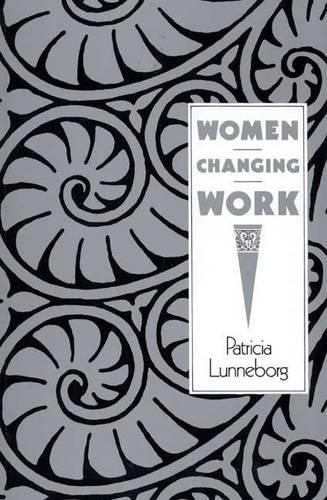
Women Changing Work
(Paperback)
Publishing Details
Women Changing Work
Bloomsbury Publishing PLC
Praeger Publishers Inc
23rd April 1990
United States
Classifications
Tertiary Education
Non Fiction
Sociology: work and labour
306.36
Physical Properties
Paperback
232
Description
This book starts from the premise that women work differently than men. Based on interviews of over 200 women doing jobs traditionally held by men, the author tested and proved the feminist theory that because women learn to be service-oriented, nurturing and balanced, they make work more humane and egalitarian. It is a celebratory book about a transformation - the reworking of male occupations based on women's unique life experiences.
Reviews
Designed for the general reader, this book on women employees in ten occupations explores the ways in which nontraditional workers, in this case women, change their once exclusionary work worlds. Very little research has examined how women have changed traditional male work worlds. Lunneborg, a retired professor of psychology and adjunct professor of women's studies at the University of Washington, has previously authored numerous publications, including some on working women. In this book, she speaks explicitly to women and wishes to encourage women workers to get into nontraditional work usually reserved for men. Drawing on in-depth interviews with women employees, Lunneborg asks five broad questions: How do you approach your job differently than men do What subtle differences do you notice in the way you do your job relative to men How do male/female value differences in your occupation affect the way work is done What are the strengths of women for your occupation How would increasing the numbers of women in your occupation change your job and workplace These probing questions generated important answers, including the basic finding that women relished managing and organizing people, data, and things. The women employees' style rejected the traditional male hierarchical, competitive, controlling style for one accenting more sharing, consensus-building, tolerance, support, and openness to change. Although Lunneborg's writing sometimes reads like a first draft, the material is extraordinarily important and thoughtfully analyzed.-Choice
"Designed for the general reader, this book on women employees in ten occupations explores the ways in which nontraditional workers, in this case women, change their once exclusionary work worlds. Very little research has examined how women have changed traditional male work worlds. Lunneborg, a retired professor of psychology and adjunct professor of women's studies at the University of Washington, has previously authored numerous publications, including some on working women. In this book, she speaks explicitly to women and wishes to encourage women workers to get into nontraditional work usually reserved for men. Drawing on in-depth interviews with women employees, Lunneborg asks five broad questions: How do you approach your job differently than men do What subtle differences do you notice in the way you do your job relative to men How do male/female value differences in your occupation affect the way work is done What are the strengths of women for your occupation How would increasing the numbers of women in your occupation change your job and workplace These probing questions generated important answers, including the basic finding that women relished managing and organizing people, data, and things. The women employees' style rejected the traditional male hierarchical, competitive, controlling style for one accenting more sharing, consensus-building, tolerance, support, and openness to change. Although Lunneborg's writing sometimes reads like a first draft, the material is extraordinarily important and thoughtfully analyzed."-Choice
Author Bio
PATRICIA W. LUNNEBORG is a retired Professor of Psychology and Adjunct Professor of Women's Studies at the University of Washington. She has written more than 100 publications and is the coauthor of To Work: A Guide for Women College Graduates.
